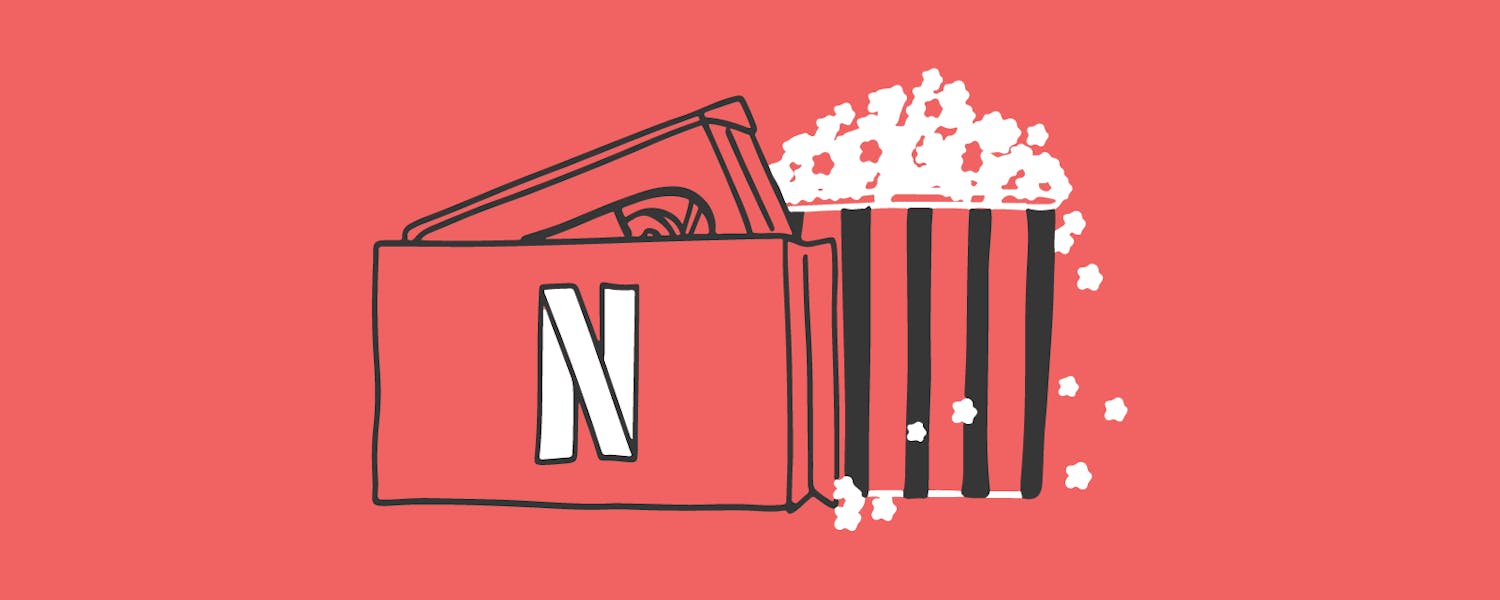Building an Empire: Netflix- Are You Still Chilling?
The world's biggest streaming service, rounding the $200 billion in market cap, you'll be stretched to find someone who hasn't heard of Netflix, and even they probably watch the odd episode on their cousin's ex-boyfriend's grandad's account.
Netflix has become shorthand for free time spent "chilling," gorging on TV series and movie after movie.
And we love sharing our accounts far and wide – at least until recently, as the streaming service begins monitoring household accounts.
After a decade of rapid expansion, Netflix is finally feeling the squeeze, with plans to cut its spending by $300 million this year.
But how did Netflix become the streaming giant it is today, and how much longer does it have left?
The Beginning
Like all success stories, this one started small. A disgruntled Reed Hastings contemplates his $40 Blockbuster fine for the late return of Apollo 13. While out jogging, an idea occurs to him: why not make his mail service that delivers movies to customers' doors?
Or at least this is one of the company's origin stories, disputed by fellow founder Marc Randolph. His version of events has the two carpooling founders hatching a plan to save them from a merger that would boot them out of a job: "Let's come up with an idea, and you can run it, and I'll fund it," Reed reportedly said.
Flickr/Global Panorama
Mail Subscription Beginnings
The development of the Japanese-made DVD sealed the fate of the two men. This new technology meant moving away from the delicate, expensive VHS and was first available in the United States in 1997.
After successfully receiving a CD of Patsy Cline's greatest hits in the post from Randolph, they decided to move ahead with the mail-order project.
Netflix was registered on the 29th of August 1997 with the help of $1.9 million from Reed Hastings.
He became Chairman, owning 70% of the company, with Marc Randolph becoming the CEO and minority owner.
A year later (give or take a few April days), the website was launched with a library of 900 videos.
Marc ordered the movie Casino as a final check before launching, and within fifteen minutes, the website crashed under a flood of 137 orders.
Beetlejuice was the company's first DVD to be mailed to a subscriber.
IMDb
By 1999, Netflix had over 200,000 subscribers and a video library counting 3,100 titles. It was growing.
Up Against a DVD Rental Giant
But Netflix's growth was not without its bumps in the road. Blockbuster posed a significant threat to the emerging company.
The DVD rental company had in 2000 turned down an offer to buy Netflix for $50 million – in fact, they were "laughed out of their office," according to former Netflix CFO Barry McCarthy.
But customers like Reed were growing dissatisfied with Blockbuster's late-fee policy, which garnered the company $800 million in 2000.
Seizing the opportunity, Netflix rented their DVDs without late fees, and subscribers flocked to them.
By 2003, they had over 1 million subscribers; by 2006, they had 6 million.
Around this time, Blockbuster was developing its online offer, too. Their edge on Netflix was Blockbuster Total Access, which allowed subscribers to return DVDs in-store or exchange them for another DVD. Randolph said that’s when things got "very scary" for Netflix around this time.
However, the newbie remained on top. With an existing debt of $1 billion and a $200 million investment in online services they had yet to see a return on, Blockbuster filed for bankruptcy after the financial crisis of 2008.
The final blow for the company, wrestling with internal management mishaps, is the battle between the companies, which is remembered as a tight one in which Blockbuster could have very seriously emerged victorious.
Streaming Service
At the break of the New Year in January 2007, Netflix launched its online streaming entertainment service.
Offering only 1,000 titles at the time of release, its offer paled compared to its 70,000 available DVDs.
The idea was that customers would download movies overnight to watch the following day, but with high-speed internet development, the online service's potential grew.
By 2011, Netflix separated the fee for its streaming service from its mailing service, charging $7.99 monthly for each.
While Lillyhammer was the first exclusive content Netflix streamed on its platform, House of Cards was the first title they ordered to be produced, based on an analysis made using customer’s data collected.
Flickr/MANYBITS
In 2013 Netflix was the first streaming platform to ever receive an Emmy for House of Cards, to later win a Golden Globe in 2014 with the same TVseries.
Netflix Goes Global
In 2016 Netflix announced the simultaneous expansion into 130 counties. Six years later, the company makes most of its money outside the US.
"Great storytelling transcends borders".
-Ted Sarandos, chief content officer of Netflix.
By 2017 Netflix had 100 million subscribers.
This global expansion may have been simultaneous, but it was calculated.
- First, moving into neighboring Canada in 2010, it was able to experiment on a population with a similar culture through data analytics and customer satisfaction records. This was the first expansion.
- The second saw the company move to over 50 countries, chosen for their similarities to the US and their broadband internet capabilities.
- These first phases allowed Netflix to build relationships with local stakeholders and test the fortitude of its software abroad.
- The third phase of Netflix's global expansion brought the service to 190 countries.
- After the previous two phases, it knew what marketing people responded to and what they wanted.
- They added more foreign-language productions, provided dubbing and subtitles for others, and invested in original content worldwide.
For crowds that primarily used phones rather than laptops or televisions, an app was made to allow easy watching on smaller devices.
Investing in local film and television production is something the company recognizes as beneficial regionally and globally.
This means more content for everyone and the sharing of stories globally.
In 2021, Netflix spent 17 billion US dollars on its content strategy, producing popular international shows like "The Crown'' and "Bridgerton''.
Whether this spending proves to be sustainable or not, Netflix has set the blueprint for innovative, in-house filmmaking that responds to consumers' social concerns (the two most-searched actors on Netflix are both women: Krysten Ritter and Winona Ryder).
Competitors in streams
Yet, as our lives become increasingly online, competition from other streaming services has grown. With competitors like Disney+, Hulu, and Amazon Prime, customers increasingly want to consume media from other outlets producing original content.
Now, working in a saturated market, Netflix and its competitors have changed the face of filmmaking for good.
With all sites wounded by the recent writers and actors strike, Netflix is also a culprit in an industry dependent on constantly producing "fresh" content, with strikers dubbing their action "the Netflix strike."
Are you still watching?
Despite recent upheaval, the story of Netflix so far is one of flexibility. It demonstrates just how far you can go when you build a business model around the desires of your customers, respond quickly to technological changes, and invest in disruptive innovation.
They have set the tone for their streaming service competitors and businesses beyond their industry. But with the purse strings tightening, Netflix, are you still chilling?
Netflix Timeline
1997 - Netflix gets funded
1998 - Netflix.com launches with 925 titles available for mail rentals
1999 - The subscription-based DVD mail service begins
2000 - Blockbuster declines to buy the company for $50 M
2002 - Netflix IPO brings $82.5 M to the company
2006 - a $1M prize is offered to develop a video-recommendation algorithm
2007 - The streaming service begins with 1,000 movie titles in its catalogue (and over 70k in its DVD catalogue)
2010 - With 3,300 stores, Blockbuster files for bankruptcy; they had 9,000 at their peak, and one remained open by 2023
2010 - Netflix launches in Canada
2011 - Netflix begins its service in Latin America
2011 - Netflix splits the streaming from their DVD service, with 11M mail subscribers and 21.5M streaming subscribers
2012 - First exclusive content is launched: Lilyhammer
2013 - First original content is found in House of Cards
2013 - First Emmy to be given for a Netflix Original
2014 - First Golden Globe given to a Netflix Original
2016 - Netflix goes worldwide in 130 countries
2019 -1st Oscar for "Best Movie" Award is given to a Netflix original
2023 - With more than 247k users, Netflix stops DVD mailing service





